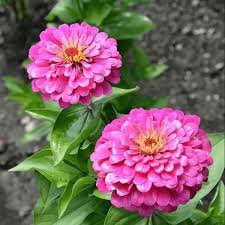
Chrysanthemums, revered for their vibrant colors, diverse forms, and extended blooming season, hold a prominent position in the ornamental horticulture industry. As one of the most widely cultivated and commercially significant ornamental plants, chrysanthemums contribute to a thriving global market encompassing production, trade, and consumption of cut flowers, potted plants, and garden varieties. In this comprehensive exploration, we delve into the multifaceted role of chrysanthemums in the ornamental horticulture industry, highlighting their cultivation, utilization, and economic significance.
**1. Cultivation and Production:**
Chrysanthemum cultivation is a sophisticated and specialized endeavor, requiring meticulous attention to detail, advanced horticultural techniques, and precise management practices to achieve optimal results. Commercial chrysanthemum production typically involves greenhouse or field cultivation, with growers employing a variety of methods to propagate, grow, and harvest chrysanthemum crops. Propagation techniques may include seed sowing, stem cutting, tissue culture, or division of clumps, depending on the desired cultivars and production requirements. Growers carefully select chrysanthemum varieties based on market demand, flower characteristics, and cultivation preferences, choosing from a vast array of shapes, colors, sizes, and bloom times to meet consumer preferences and industry trends. Throughout the cultivation process, growers must manage environmental conditions, nutrient levels, irrigation schedules, pest and disease pressures, and other factors to ensure the health, vigor, and quality of chrysanthemum crops. With proper care and attention, chrysanthemums thrive in commercial production settings, yielding abundant blooms of exceptional quality for the ornamental horticulture market.
**2. Market Trends and Consumer Preferences:**
The ornamental horticulture market encompasses a diverse array of products and services, including fresh cut flowers, potted plants, garden varieties, floral arrangements, and landscaping services. Within this market, chrysanthemums occupy a prominent position, valued for their beauty, versatility, and longevity. Market trends and consumer preferences play a crucial role in shaping the demand for chrysanthemum products, driving innovation, diversification, and market segmentation within the industry. In recent years, there has been a growing demand for sustainably grown, locally sourced, and ethically produced chrysanthemums, reflecting consumer concerns about environmental impact, social responsibility, and product quality. Additionally, there is increasing interest in novel chrysanthemum varieties, specialty colors, unique forms, and value-added products, catering to diverse tastes and preferences in the ornamental horticulture market. Growers, breeders, wholesalers, retailers, and florists continually adapt to changing market dynamics, leveraging consumer insights, market research, and industry collaborations to stay competitive and meet the evolving needs of customers in the ornamental horticulture sector.
**3. Economic Impact and Industry Dynamics:**
The ornamental horticulture industry, including chrysanthemum production and trade, is a significant contributor to the global economy, generating billions of dollars in revenue annually and supporting livelihoods across the value chain. Chrysanthemum cultivation creates employment opportunities for growers, laborers, technicians, and support staff involved in production, harvesting, processing, packaging, and distribution of chrysanthemum crops. Furthermore, chrysanthemum products contribute to various sectors of the economy, including floriculture, agriculture, landscaping, tourism, and retail, driving economic growth, rural development, and export earnings in many regions around the world. The economic impact of chrysanthemums extends beyond direct production and trade to encompass related industries such as transportation, logistics, marketing, and floral design, creating a ripple effect of economic activity and value creation throughout the supply chain. Governments, industry associations, and stakeholders collaborate to support and promote the ornamental horticulture sector, advocating for policies, initiatives, and investments that enhance competitiveness, sustainability, and market access for chrysanthemum growers and businesses.
**4. Innovation and Technology Adoption:**
Innovation and technology play a pivotal role in advancing chrysanthemum cultivation, improving productivity, quality, and sustainability in the ornamental horticulture industry. Growers and researchers continually explore new cultivation techniques, breeding methods, crop protection strategies, and postharvest technologies to enhance chrysanthemum production efficiency, reduce environmental impact, and meet evolving market demands. Innovations in greenhouse automation, climate control, irrigation systems, and integrated pest management enable growers to optimize resource use, minimize inputs, and maximize yields while ensuring crop health and quality. Biotechnological advancements, such as genetic engineering, molecular breeding, and genome editing, offer opportunities to develop novel chrysanthemum varieties with improved traits, including disease resistance, extended vase life, and enhanced ornamental characteristics. Furthermore, digital technologies, data analytics, and e-commerce platforms empower growers, wholesalers, and retailers to streamline operations, optimize supply chains, and connect with customers in increasingly digitalized markets. By embracing innovation and technology adoption, the ornamental horticulture industry continues to evolve and thrive, driving progress, sustainability, and competitiveness in chrysanthemum production and trade.
**5. Global Trade and Distribution:**
The global trade and distribution of chrysanthemums form a vital component of the ornamental horticulture industry, facilitating the exchange of chrysanthemum products across borders and continents. Chrysanthemums are cultivated and traded extensively in major flower-producing regions such as the Netherlands, Colombia, Ecuador, Kenya, and China, where favorable climate conditions and advanced production techniques enable year-round cultivation and export. Cut chrysanthemum flowers, grown in large-scale greenhouse operations or open fields, are harvested, graded, and packaged for distribution to domestic and international markets via air, sea, and land transportation networks. These flowers are shipped to wholesale markets, auction houses, floral distributors, and retail outlets worldwide, where they are purchased by florists, event planners, retailers, and consumers for use in floral arrangements, bouquets, and decorations. Additionally, potted chrysanthemum plants are propagated, grown, and distributed through nursery operations, garden centers, and online platforms, catering to home gardeners, landscaping professionals, and horticultural enthusiasts seeking ornamental plants for indoor or outdoor use. The global trade and distribution of chrysanthemums contribute to economic development, job creation, and cultural exchange, connecting producers and consumers across continents and enriching lives through the beauty and diversity of chrysanthemum flowers.
**6. Research and Development:**
Research and development play a crucial role in advancing chrysanthemum cultivation, breeding, and production techniques, driving innovation, sustainability, and competitiveness in the ornamental horticulture industry. Public and private research institutions, universities, botanical gardens, and breeding companies invest in chrysanthemum research to improve plant genetics, enhance agronomic traits, develop pest and disease resistance, and optimize cultivation practices. Breeding programs aim to create new chrysanthemum varieties with novel colors, shapes, sizes, and performance characteristics, addressing market demand for innovative and distinctive floral products. Researchers explore biotechnological approaches, such as tissue culture, genetic transformation, and marker-assisted breeding, to accelerate breeding progress and introduce desirable traits into chrysanthemum germplasm. Additionally, studies on crop physiology, postharvest handling, and environmental management inform best practices for chrysanthemum production, ensuring efficient resource use, reduced environmental impact, and enhanced product quality. Knowledge sharing, collaboration, and technology transfer among researchers, growers, breeders, and industry stakeholders drive continuous improvement and innovation in chrysanthemum cultivation, positioning the ornamental horticulture industry for future growth and sustainability.
**7. Sustainability and Social Responsibility:**
Sustainability and social responsibility are increasingly important considerations in chrysanthemum cultivation and the ornamental horticulture industry as a whole. Growers, producers, and stakeholders are committed to implementing environmentally friendly practices, conserving natural resources, and minimizing ecological footprint throughout the chrysanthemum supply chain. Sustainable production methods, such as integrated pest management, water conservation, energy efficiency, and waste reduction, promote ecological balance and protect biodiversity while ensuring the long-term viability of chrysanthemum cultivation. Social responsibility initiatives focus on promoting fair labor practices, ensuring safe working conditions, and supporting the well-being of workers and communities involved in chrysanthemum production. Certification programs, industry standards, and voluntary initiatives, such as Fair Trade, Rainforest Alliance, and GlobalGAP, provide assurance to consumers that chrysanthemum products are produced responsibly and ethically. By embracing sustainability and social responsibility principles, the ornamental horticulture industry enhances its reputation, strengthens stakeholder relationships, and meets the growing demand for environmentally and socially conscious products in the global marketplace.
**8. Market Challenges and Opportunities:**
While the ornamental horticulture industry offers vast opportunities for chrysanthemum cultivation and trade, it also faces several challenges, including market competition, price volatility, supply chain disruptions, and regulatory constraints. Intense competition from alternative floral products, such as roses, lilies, and orchids, requires chrysanthemum growers and businesses to differentiate their offerings, innovate product designs, and enhance marketing strategies to capture consumer attention and loyalty. Price volatility in global flower markets, influenced by factors such as currency fluctuations, production cycles, and consumer demand trends, poses risks to profitability and financial stability for chrysanthemum producers and traders. Supply chain disruptions, such as transportation delays, natural disasters, and trade barriers, can impact the availability and distribution of chrysanthemum products, affecting market access and customer satisfaction. Regulatory constraints, including phytosanitary regulations, import/export restrictions, and intellectual property rights, present compliance challenges and administrative burdens for chrysanthemum businesses operating in international markets. Despite these challenges, the ornamental horticulture industry offers numerous opportunities for growth and innovation, driven by increasing consumer demand for floral products, emerging market trends, technological advancements, and changing consumer preferences. By embracing market opportunities, leveraging technological innovations, and adopting sustainable practices, chrysanthemum growers and businesses can navigate challenges, capitalize on emerging trends, and position themselves for success in the dynamic and evolving ornamental horticulture industry.









